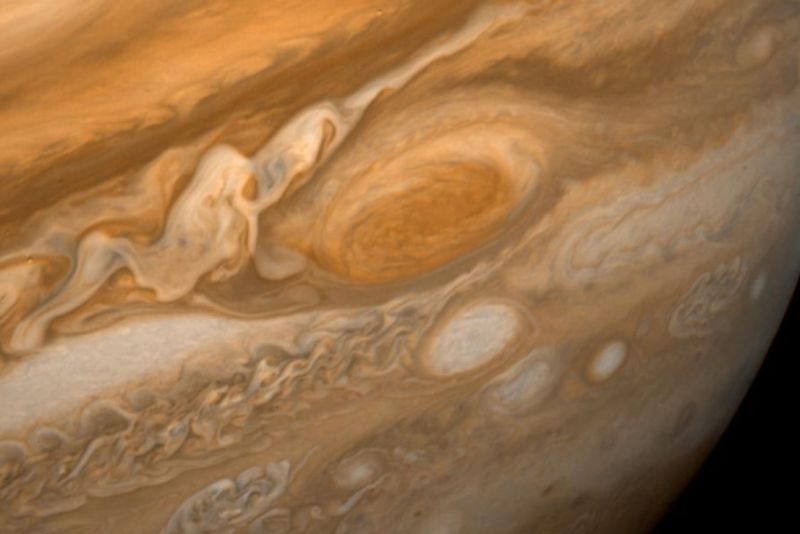No, Jupiter’s Great Red Spot is not disintegrating, physicist claims

Enlarge / A dramatic view of Jupiter's Great Red Spot and its surroundings, courtesy of Voyager 1 on Feb. 25, 1979, when the spacecraft was 5.7 million miles (9.2 million kilometers) from Jupiter. (credit: NASA/JPL/Public domain)
Earlier this year, several amateur astronomers spotted an unusual anomaly on the planet Jupiter: bits of the gas giant's famed Great Red Spot appeared to be flaking off, raising fears that the planet's most identifiable feature might be showing signs of disappearing. But Philip Marcus, a physicist at the University of California, Berkeley, begs to differ. He argues that reports of the red spot's death have been greatly exaggerated, and at a meeting of the American Physical Society's Division of Fluid Dynamics in Seattle this week, he offered an intriguing counter-explanation for the flaking.
The Great Red Spot is basically a gigantic storm in Jupiter's atmosphere, about 22 degrees south of the planet's equator. Because it's located in the southern hemisphere, it rotates counter-clockwise, meaning it's more of an "anti-cyclone." The 17th-century scientist Robert Hooke is commonly credited with the first recorded observation of the red spot in 1664, although some contend Giovanni Cassini provided a more convincing description in 1665. After 1713, there were no reported observations for over 100 years, until the red spot was observed again in 1830 and continually thereafter. Despite the gap in recorded observations, many astronomers believe it's the same storm, still going strong more than 350 years later.
This isn't the first time an alarm has been raised about the possible dissolution of the red spot. Back in 2004, astronomers concluded that it was shrinking, compared to 100 years ago, and the spot seems to have been shrinking even more rapidly since 2012. In May 2017, the Gemini North telescope on the summit of Hawaii's Maunakea captured an image of a small hook-like cloud on the red spot's western side, as well as a long wave, or "streamer," extending off its eastern side.
Read 9 remaining paragraphs | Comments